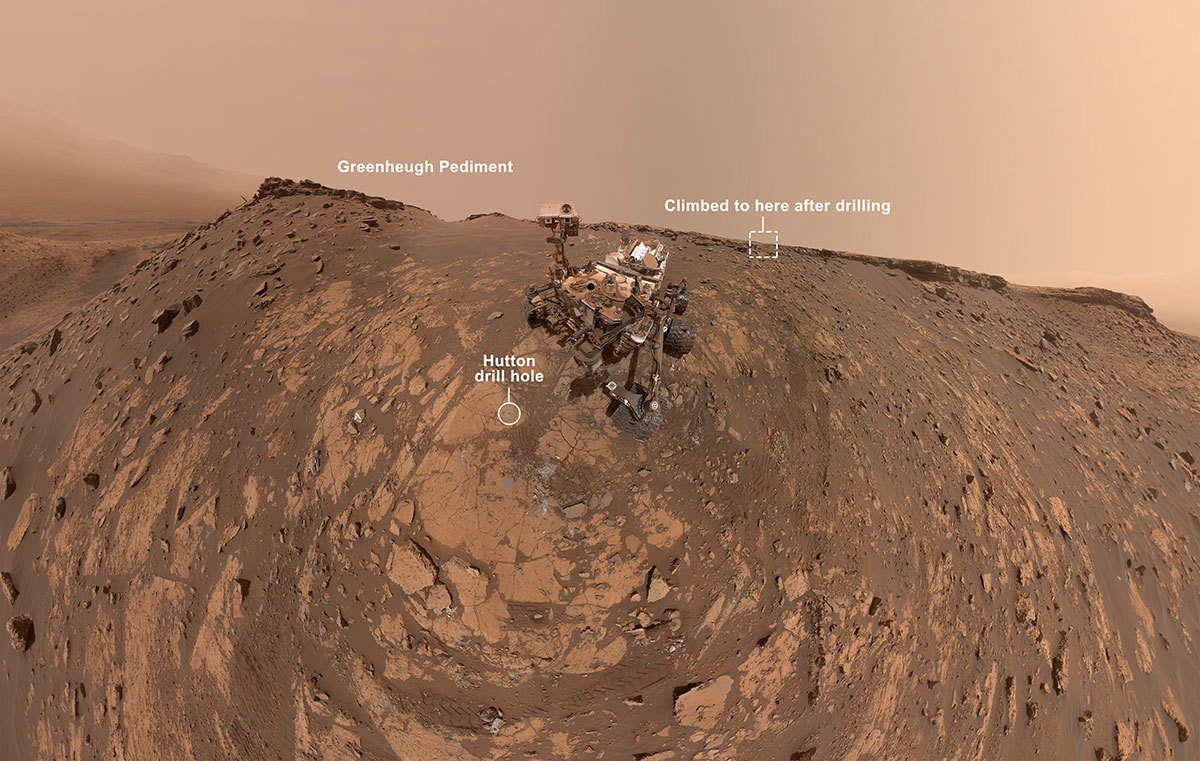

Since then, the rover has driven more than 18 miles (29 kilometres) and ascended over 2,000 feet (625 metres) as it explores Gale Crater and the foothills of Mount Sharp within it. The one-tonne vehicle launched from Earth in November 2011 and – after an arduous nine-month journey – it set out to look for evidence that Mars may once have supported life. Last August marked 10 years on the Red Planet for the rover. However, it looks like these minerals were resistant to erosion, so remain on the dusty surface of the Red Planet. Studies of earlier versions have revealed that the minerals, sprouting out in different directions, were likely embedded inside a rock that eroded away over time. NASA scientists confirmed it was a 'diagenetic crystal cluster', smaller than a penny, which may have been formed by minerals precipitating from water. In February 2022, the rover captured an image of what appeared to be a coral-like 'flower' in the Gale Crater, but was actually a microscopic mineral formation. Last June, it discovered some strange, twisting structures poking out of the surface of Mars, which are now thought to be naturally-occurring 'hoodoos'.Įxperts said the columns were probably created from cement-like substances that once filled ancient cracks of Martian bedrock.īut, over time, the softer rock eroded away, leaving only the twisting towers of compact material protruding from the sand in the crater. This is not the first strange formation that has been photographed by the Curiosity rover that has left scientists scratching their heads. NASA's Curiosity rover (pictured) has been roaming the Gale Crater since August 2012 as part of NASA's Mars Science Laboratory (MSL) mission While wrote: 'I'm happy to believe that's the back of a fossilised Martian dragon, curled up in its final resting place.' Twitter said: 'On earth that would be a fossil plant say a fir tree branch or fish backbone, difficult for it to be a natural rock formation.' Other online guesses include 'it looks like a very easy to crumble fish vertebra', 'fish fossils', 'mackerel fillet', and 'skeleton of some prehistoric creature'. Ms Cabrol also said it was likely the 'remains of ripples after lots of erosion'. Twitter user Martin Weil said: 'If it blows over loose sand for a sufficiently large number of eons, every geometric form known to us may eventually be created.' Some suggest Martian winds may have eroded the rocks over a large expanse of time.

'I cannot wait to have a microscopic image of this one.'Īnother user commented: 'Really strange, never seen something like this and I have been looking into Mars images since Sojourner mission back in 1997.' Cabrol shared a photo of it on Twitter, commenting that 'in 20 years of studying Mars, that's the most bizarre rock I have ever seen. It is also constantly beaming back images of the strange things it comes across, like this spiky rock formation.Īstrobiologist Nathalie A. The rover's mission goals include an investigation of the Martian climate and geology, and to prepare for human exploration.


 0 kommentar(er)
0 kommentar(er)
